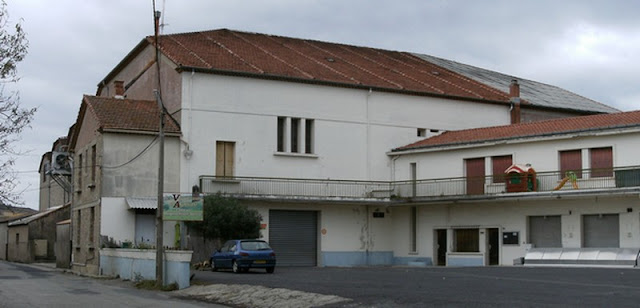French Mediterranean wine tastings are still rare in London. A big thank you to Louise Hurren for bringing this one to my attention. Louise is based in Montpellier and doing an outstanding job promoting the region's wines - masterminding the recent Outsiders events (my experience is
here) is just one example. Following her on
Facebook (or
Twitter, although I'm not a Twitterer myself) is a nice lazy way of keeping abreast of Languedoc wine news and events (along with her taste in music).
Dudley & de Fleury Wines started last year and are still building their list. Currently it sports a majority of producers from outside the traditional stalking ground of most UK based merchants. The full gambit from their three Languedoc, actually Hérault, imports were available for tasting at their elegant Notting Hill mews office.
To ease my London streets sabotaged palate I started with
ISA White from
Chemins du Bassc (Cotes du Thongue). Nice fresh acidity and whiffs of
wild rose with a nice dry finish.
La Grange de Quatre Sous
Hildegard Horat was at the Outsiders tasting I mention above and a wine I first tasted back in 1993, so it seemed the obvious place to start. Her wines are Saint-Chinian's but her choice of grapes rules them out of the appellation.
Chardonnay 2008 reminded me of coconut and straw and has a nice nutty finish - a reassuringly southern style.
Jeu de Mail 2007 has a nice perfume and creaminess about it and a streak of almonds and olive. The last white
Bu N'Daw 2006 is made from Petite Arvine. I found restrained pineapple with dried herbs and deliciously mouth filling. Clearly a grape with little of its own character to get in the way which is what interesting Langudoc whites are all about for me.
Garsinde 2009 has a lovely pure raspberry and cassis fruit jelly character. Uncomplicated, fresh with nice length. An ideal restaurant luncheon wine.
Les Serrottes is the wine I know best and older vintages usually needed ageing to be at their best. More recently, including this
2006, it drinks well young without compromising on the meaty tannins and this has interesting herbaceous fruit to contemplate.
Lo Molin 2006 is rich and solid with tar and heaps of tannin and is worth keeping. Finally
La Grange de Quatre Sous 2007 is like a grown up version of the Garsinde with an extra dimension of flavour.
Mas de L'Ecriture
I tasted Pascal Fulla's 2004 on his village Jonquières' open day last spring. Here was a chance to sample the 2006 and 2007 vintage along with a 2001 which would help me decide when should I broach my last couple of bottles. Serious Languedoc reds from 2007 have been surprisingly approachable for their age and these followed the pattern.
Les Pensees 2007 has warm ripe heady fruit with a gentle spiciness while
l'Ecriture 2007 has a fuller more concentrated style with sweet leathers. In contrast both
Les Pensees and
l'Ecriture 2006 needed more work to appreciate through their big tannins and illustrated why Pascal advises decanting well in advance - something I discussed with Richards behind Dudley & Fleury. Everyone agreed that the quality of fruit on all these wines is outstanding.
L'Ecriture 2001 is starting to integrate and grow layers of complexity. It was well oaked in its day and the style has evolved to make oak less prominent - something that parallels my changed taste in the same period. Certainly a treat of a flight.
Virgile Joly
Virgile's arrival in the Languedoc as a grower winemaker is well documented at a personal level through Patrick Moon's Virgile's Vineyard published 8 years ago. I still have some 2001 Virgile Rouge that started as an uncompromising new oak beast that's only been ready to my taste in the past few years.
Saturne 2008 Blanc has sherbet and pineapple but isn't over the top tropical but on the palate it seemed a bit flatter - this could be a white that would benefit from a decant.
Virgile 2005 Blanc is an extraordinary complex yeasty (fino sherry or Jura flor) and oxidative style yet has a lively mouth feel.
Joly Rouge 2008 makes for pleasant early drinking. Heady, ripe tarry fruit that seems the hallmark of Saint Saturin terroir (more clay content perhaps?).
Saturne 2007 Rouge is adorned with elements of baked liquorice and molasses while the
Virgile Rouge 2004 shows maturing fruit and leathers and seems as oaked as I remember the 2001.
I never found Virgile's wine offer particularly good RQP, but with Dudley
& de Fleury pricing (link below) things are heading in the right direction despite the recent weakness of the UK pound against the Euro.
For retail prices check
Dudley & de Fleury's list.
Their other French Mediterranean offerings, such as Mas de Gourgonnier, are worth checking out. Interestingly grape varieties aren't emphasised as much as most retailers, preferring to let taste be the focus.






































